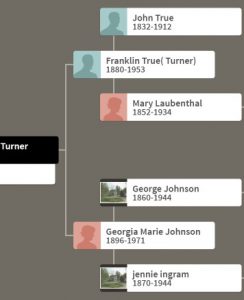 In sorting out a DNA match recently, I uncovered a rather puzzling family story. On 23andme, my father’s closest “stranger match” was a person I will call “J.O.H.” She and my father shared 0.83% DNA along 5 DNA segments, for a total of 62 centimorgans, with a predicted kinship of third cousins. The only people my father had more DNA in common with were myself, my daughter, and one known second cousin once removed though his paternal grandfather. Another known second cousin once removed, also through my father’s paternal grandfather, had less DNA in common with my father than my father had with J.O.H. Both of these known cousins were not related to this stranger match, leading me to conclude this match should be through my father’s paternal grandmother [from Massachusetts], or through my father’s mother [from Pennsylvania]. Continue reading Through the wringer
In sorting out a DNA match recently, I uncovered a rather puzzling family story. On 23andme, my father’s closest “stranger match” was a person I will call “J.O.H.” She and my father shared 0.83% DNA along 5 DNA segments, for a total of 62 centimorgans, with a predicted kinship of third cousins. The only people my father had more DNA in common with were myself, my daughter, and one known second cousin once removed though his paternal grandfather. Another known second cousin once removed, also through my father’s paternal grandfather, had less DNA in common with my father than my father had with J.O.H. Both of these known cousins were not related to this stranger match, leading me to conclude this match should be through my father’s paternal grandmother [from Massachusetts], or through my father’s mother [from Pennsylvania]. Continue reading Through the wringer
Tag Archives: Research tips
A woman’s nationality

Between 2 March 1907 and 22 September 1922, the Expatriation Act of 1907 required a woman who married a foreigner to take the nationality of her husband, and therefore she lost her own citizenship. The Cable Act (also known as the “Married Women’s Independent Nationality Act” or the “Married Women’s Act”) passed on 22 September 1922; it repealed the 1907 law and thus severed a woman’s marital status from her husband’s nationality. Continue reading A woman’s nationality
Cambridge Cameos
 Reading Alicia Crane Williams’s post on Sex in Middlesex reminded me of another great work by Roger Thompson – Cambridge Cameos – Stories of Life in Seventeenth-Century New England, which contains forty-four sketches from the period 1651 to 1686. They are fascinating stories involving mostly ordinary people. Some of the more colorful chapters cover Brutality or Bloodsucking; Town versus Gown; Witchcraft or Madness; and A Subversive Physician. These vignettes are based on thousands of original documents Thompson examined that provide a rare chance to hear firsthand accounts of many seventeenth century New Englanders. Continue reading Cambridge Cameos
Reading Alicia Crane Williams’s post on Sex in Middlesex reminded me of another great work by Roger Thompson – Cambridge Cameos – Stories of Life in Seventeenth-Century New England, which contains forty-four sketches from the period 1651 to 1686. They are fascinating stories involving mostly ordinary people. Some of the more colorful chapters cover Brutality or Bloodsucking; Town versus Gown; Witchcraft or Madness; and A Subversive Physician. These vignettes are based on thousands of original documents Thompson examined that provide a rare chance to hear firsthand accounts of many seventeenth century New Englanders. Continue reading Cambridge Cameos
Local landmarks and genealogy
 What do every day landmarks within your community and genealogy have in common? Everything! Yes, that is correct, everything. Regional genealogy is all around you. The names of everyday landmarks are useful clues connecting local surnames to specific geographical regions. Some of the oldest family names within a region can be found in the names of streets, buildings, and some of popular destinations within a community. Continue reading Local landmarks and genealogy
What do every day landmarks within your community and genealogy have in common? Everything! Yes, that is correct, everything. Regional genealogy is all around you. The names of everyday landmarks are useful clues connecting local surnames to specific geographical regions. Some of the oldest family names within a region can be found in the names of streets, buildings, and some of popular destinations within a community. Continue reading Local landmarks and genealogy
Deference to defiance
 The last of Roger Thompson’s books on my shelf, and the biggest (593 pages including index), is From Deference to Defiance, Charlestown, Massachusetts, 1629–1692. Published in 2012 by NEHGS, this is the last of Thompson’s works on three founding colonial towns – Watertown, Cambridge,[1] and Charlestown. It is a pièce de résistance for descendants of Charlestown families – including a sketch on one of my most interesting ancestors, Phineas Pratt, who died in Charlestown at the age of 90 after surviving in his younger days a heroic, solitary trip through frozen woods to bring rescuers to the aid of Weymouth settlers in 1623. Continue reading Deference to defiance
The last of Roger Thompson’s books on my shelf, and the biggest (593 pages including index), is From Deference to Defiance, Charlestown, Massachusetts, 1629–1692. Published in 2012 by NEHGS, this is the last of Thompson’s works on three founding colonial towns – Watertown, Cambridge,[1] and Charlestown. It is a pièce de résistance for descendants of Charlestown families – including a sketch on one of my most interesting ancestors, Phineas Pratt, who died in Charlestown at the age of 90 after surviving in his younger days a heroic, solitary trip through frozen woods to bring rescuers to the aid of Weymouth settlers in 1623. Continue reading Deference to defiance
Another place
“It is good people who make good places.” – Anna Sewell
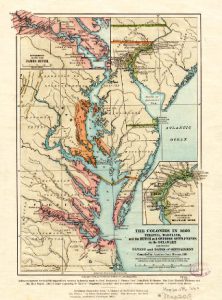
Like most of us discovering our family history, I rely heavily on census records. Often we come across numerous variations in the spelling of names of people, places, and things as we review those records. Recently, in looking through a few extended branches of my tree in differing U.S. Federal Census records, I discovered that a place can mean many different things.
I found an example of this with my great-great-grandfather, John Henry Record (1840–1915). John Record was from Maryland’s Eastern Shore, and (for the most part) records reflecting his origins, and those of his parents, are generally consistent with that area. However, with the arrival of the U.S. Federal Census for 1900 my progenitor states that his mother was born in Sweden. Sweden? Continue reading Another place
Crowdsourcing
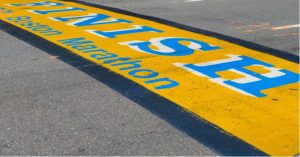 Implementing crowdsourcing as the chief means of gathering information has had success from Wikipedia and the Oxford English Dictionary to Planters Peanuts. In fact, I would be so bold as to put Vita Brevis on this list – as comments from our readers have led to many breakthroughs in our bloggers’ brick walls.
Implementing crowdsourcing as the chief means of gathering information has had success from Wikipedia and the Oxford English Dictionary to Planters Peanuts. In fact, I would be so bold as to put Vita Brevis on this list – as comments from our readers have led to many breakthroughs in our bloggers’ brick walls.
Case in point: On 20 April 2015, I wrote a blog post (Where did the first Boston Marathon winner go?) in which I lamented the problems facing genealogists, especially when asked to locate a person with a very common name in a very large place. Continue reading Crowdsourcing
Divided We Stand
 Getting back to our Roger Thompson book club, the next title on my shelf is Divided We Stand, Watertown, Massachusetts, 1630-1680.[1] Here Thompson presents a holistic view of what it was like living in Watertown by studying five areas – I. New World from Old (The Lie of the Land, The Peopling of Early Watertown, 1630–1640, and The View from the Stour), II. Foundations (Government, Land, and religion), III. Economy (Living with Livestock, and Livelihood: The Town’s Economy), IV. Care in the Community (Welfare, The Rising Generation, The Family), and V. Reinforcing Consensus (Invisible Indians, “Foreigners” and Community); followed by a conclusion, “Continuity and Change, Decline and Discord.” Continue reading Divided We Stand
Getting back to our Roger Thompson book club, the next title on my shelf is Divided We Stand, Watertown, Massachusetts, 1630-1680.[1] Here Thompson presents a holistic view of what it was like living in Watertown by studying five areas – I. New World from Old (The Lie of the Land, The Peopling of Early Watertown, 1630–1640, and The View from the Stour), II. Foundations (Government, Land, and religion), III. Economy (Living with Livestock, and Livelihood: The Town’s Economy), IV. Care in the Community (Welfare, The Rising Generation, The Family), and V. Reinforcing Consensus (Invisible Indians, “Foreigners” and Community); followed by a conclusion, “Continuity and Change, Decline and Discord.” Continue reading Divided We Stand
Strong emotions
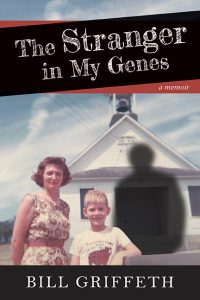 Several weeks ago I received an email from an acquaintance of mine, a man I will describe only as a prominent African American personality. Let’s call him Alex. He emailed to say he had read my book, The Stranger in My Genes, and he wanted to discuss something with me. Privately.
Several weeks ago I received an email from an acquaintance of mine, a man I will describe only as a prominent African American personality. Let’s call him Alex. He emailed to say he had read my book, The Stranger in My Genes, and he wanted to discuss something with me. Privately.
My book, published by NEHGS, tells the story of a DNA test I took to help a cousin with his genealogical research. The results were shocking. They revealed that my father was not my father. Since it was released in September of 2016, I have heard from dozens of people – friends and strangers – who have had similar experiences. I assumed Alex was only the latest. Continue reading Strong emotions
One more!
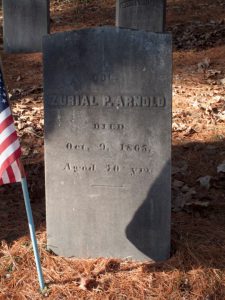
An example of how a final spouse might be overlooked occurred when I was researching a “double Lippitt” spouse, Zurial Potter Arnold (1795–1865) of Eastford, Connecticut.[1] Zurial was married to two daughters of Moses and Anstress (Holden) Lippitt of Killingly, Connecticut. He first married Ann Lippitt in 1816; she died in 1823. He then married Ann’s sister Hannah in 1824. I found a reference to Zurial’s 1865 death on findagrave, which showed he was buried near a total of four wives, as also shown below in the Charles R. Hale Collection of Connecticut Cemetery Inscriptions. Continue reading One more!